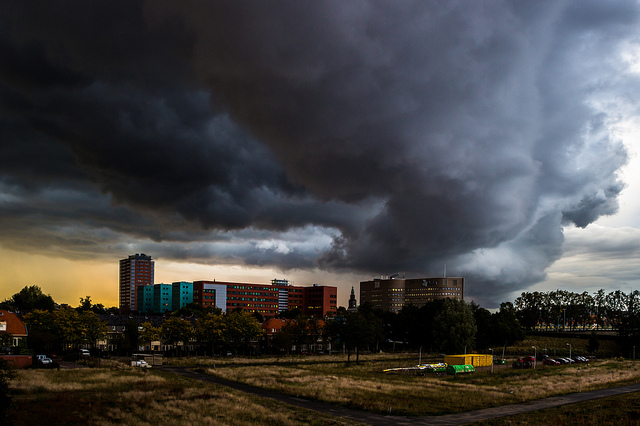 Not since at least the end of the Cold War has it been so easy to paint a disturbing picture of the global strategic landscape.
Not since at least the end of the Cold War has it been so easy to paint a disturbing picture of the global strategic landscape.
Ukraine’s sovereignty has been trashed by Russia. Large swaths of Iraq and Syria have descended into medieval barbarism. On the African continent, massacres and kidnappings occur amid terrorists’ training grounds. The Mediterranean is awash with the bodies of refugees fleeing the mayhem unleashed in North Africa. Israel and the occupied territories fester with no solution in prospect. And despite a deal in the offing, Iran’s nuclear ambitions remain at best delayed, threatening a breakout of nuclear proliferation in the Middle East.
Closer to home, North Korea remains in the hands of a bizarre despot. Thailand stands on the brink of chaos if not civil war. And then there’s China.
After two decades of strong economic growth, China is testing the limits of its neighbours’ forbearance, including through an egregious claim to almost all of the South China Sea—a claim it’s asserting through brinkmanship rather than diplomacy. It’s hardly surprising that Japan is shaking off its introspection to bolster its defences and strengthen its strategic alliance with the United States. If only the United States was the omnipotent power it once was. Over the past five years, real defence spending in China has increased by 48% while US defence spending has fallen by almost 18%.
With such an outlook, you’d think that it would be easy to make the case for robust defence spending. If only it were that simple. Just as there’s a storm brewing on the strategic horizon, dark clouds are gathering on the economic horizon.
It’s been almost eight years since the world was rocked by the most serious financial crisis since the 1930s, yet the recovery remains weak, uneven and fragile. In the United States, the green shots of recovery have withered on the branch more than once—perhaps this time the recovery will hold. The Eurozone remains in the grip of anaemic growth, with cripplingly high unemployment in Greece (25.7%), Spain (23.4%), Italy (12.6%) and France (10.6%) to name a few. To make matters worse, the single currency has proven to be a trap that sustains damaging trade imbalances within its boundary. Meanwhile Japan is close to recording two decades of economic stagnation, despite heroic fiscal measures. Debt has sky-rocketed in many developed nations as governments have borrowed massively to make ends meet in the face of collapsing revenues.
For a while it looked as though emerging economies like China had escaped the ravages of the financial crisis, but that’s not the case. Having substituted infrastructure investment for exports after the crisis, China is now struggling to generate domestic demand. As a result, consistent 10% per year growth is looking more like 6%.
Policymakers have not been idle. Interest rates have been slashed to zero and quantitative easing has been injected billions of dollars into the monetary bases of Japan, the United States and the Eurozone. But much like pumping air into a tyre with a hole, they’ve little to show for it in terms of economic growth—though we cannot be sure what the counterfactual would have been.
The influx of so much money into those economies has devalued their currencies and prevented others from being export competitive. One country’s exercise of sovereign monetary policy looks like a volley fired in a currency war to another.
If this were not enough, low interest rates are fuelling extraordinary asset price booms in many markets. These booms might turn out to be unstable bubbles that lead to further financial crises. Let’s hope the watered-down tightening of financial market regulation prove sufficient to prevent a repeat of the cascading contagion of September 2008.
For a country such as Australia with a narrow export base and, for the moment at least, a narrow tax base, the first line of defence against economic and financial uncertainty is low debt. If the worst happens, the government’s capacity to borrow will be the shock absorber that will have to cushion the blow. The less debt we have entering the next crisis, the more ability we’ll have to ride it out.
Now you can see the problem. To guard against strategic uncertainty we need to invest in a capable defence force. To guard against economic instability, we need to get the deficit under control and pay down debt. The trouble is each and every dollar can only be spent once.
If the government had to choose between national security and economic security, that would be bad enough. The risks on either front are difficult to quantify and even harder to compare. But there’s a third claimant to those precious dollars; an electorate that still remembers the good times of the resource boom and the successive waves of tax cuts and middle class welfare. Everyone agrees that we need to tighten belts in the post financial crisis world—only everyone thinks that their own belt is quite tight enough, thank you. Whatever the government does to rein in spending or boost revenue risks an electoral backlash.
So what will the Treasurer have to say tonight? The promise of 2% of GDP defence spending is so far off it’ll hardly rate a mention—any details will have to await the White Paper. Perhaps there’ll be a near-term adjustment to smooth the path towards the promised end point. Of much more interest will be the fiscal strategy the Treasurer lays out. Each year that hard decisions are deferred is another year we’ll be living with heightened risk to our economic security. Moreover, the more that our debt grows, the harder it will be to fulfil the promise to boost defence spending.

